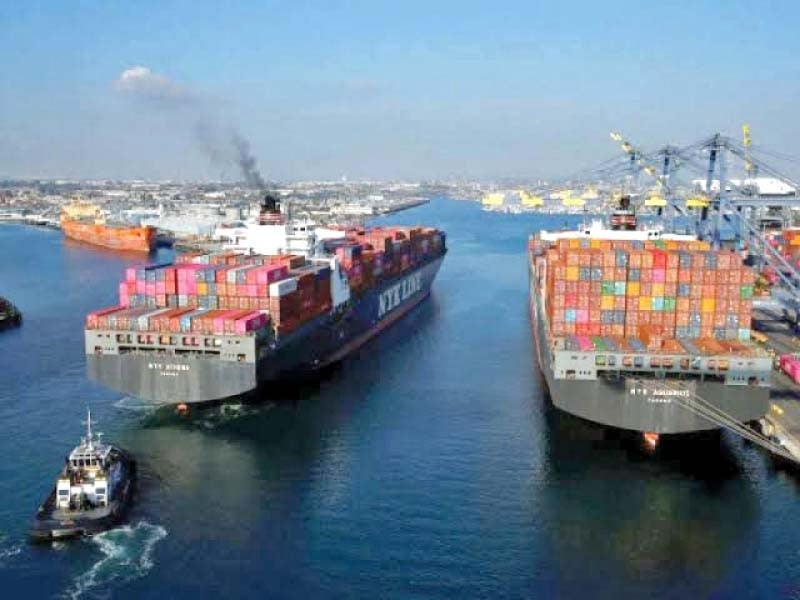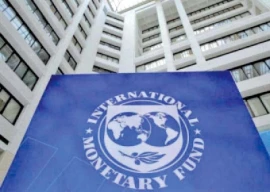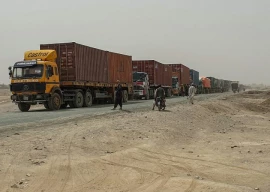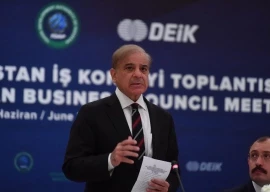
Pakistan’s trade deficit rose steeply to $43.3 billion in 11 months of the current fiscal year with imports hitting the $72 billion mark but the official foreign exchange reserves slipped to single digit, painting a dangerous picture of the external sector.
Although exports crossed the annual target on the back of higher global commodity prices, the receipts proved insufficient to restrict the trade gap to manageable levels during the July-May period of current fiscal year, showed the trade summary released by the Pakistan Bureau of Statistics (PBS) on Thursday.
Exports reversed in the month of May compared to the previous month, dipping to $2.6 billion again.
The national data collecting agency reported that the trade deficit during the July-May period amounted to $43.3 billion, which was nearly $16 billion, or 58%, more than the same period of previous year, according to the PBS.
The $43.3 billion gap between exports and imports was equal to 153% of the annual estimate for fiscal year 2021-22, showing a huge deviation from the previous government’s estimates.
The central bank’s foreign currency reserves were constantly on the decline and dipped further to single digit at the end of last month – not enough to cover two months of imports.
However, Pakistan hopes to get some temporary relief once the International Monetary Fund’s (IMF) programme is revived and the blocked funds start pouring in.
However, the country needs to start working on measures that may reverse the existing trend of importing everything from abroad from consumption to manufacturing goods, which has exposed Islamabad to many shocks.
The government’s trade policies have been influenced by a few handpicked exporters, who put pressure to take monetary benefits, keeping the export base narrow and restricted to a few sectors.
It is high time that the government withdraws around Rs100 billion in subsidies being availed by the exporters every year, mainly the textile sector.
PBS stated that imports in the July-May period of current fiscal year increased 44% to $72.2 billion. In absolute terms, imports grew $22.2 billion, according to the PBS.
The pace of increase in imports remained high, which has taken a heavy toll on the foreign exchange reserves. The previous PTI government had set the annual import target at $55.2 billion, which was breached in the ninth month of the current fiscal year.
Higher global commodity prices also contributed to the surging imports along with the country’s inability to push the second phase of industrialisation. Pakistan imports almost everything from raw material to intermediary goods as well as grains and agricultural inputs.
The government last month banned the import of 41 goods to save roughly $300 million a month but the impact is not significant that can ease the pressure on foreign exchange reserves.
The current account deficit has already widened to $13.8 billion in the first 10 months of the outgoing fiscal year.
Exports increased nearly 28% in the first 11 months of FY22 and stood at $28.8 billion against $22.6 billion in the same period of previous year, according to the PBS. In absolute terms, there was an increase of $6.3 billion in exports.
In May alone, imports were recorded at $6.64 billion, showing an increase of $1.4 billion, or 25%, compared to the same month a year ago, according to the PBS.
Exports of goods stood at $2.6 billion last month, higher by nearly 56%, or $930 million, over the same month of previous year. Consequently, the trade deficit widened nearly 11.5% year-on-year to over $4 billion in May.
On a month-on-month basis, the exports contracted 10% to $2.6 billion in May 2022 over the preceding month, showing a dip of $296 million. Imports remained almost at previous month’s level on a month-on-month basis.
As a result, the trade deficit widened to $4 billion in May, up nearly 7%, or $261 million, on a month-on-month basis.
Published in The Express Tribune, June 3rd, 2022.
Like Business on Facebook, follow @TribuneBiz on Twitter to stay informed and join in the conversation.






















COMMENTS
Comments are moderated and generally will be posted if they are on-topic and not abusive.
For more information, please see our Comments FAQ